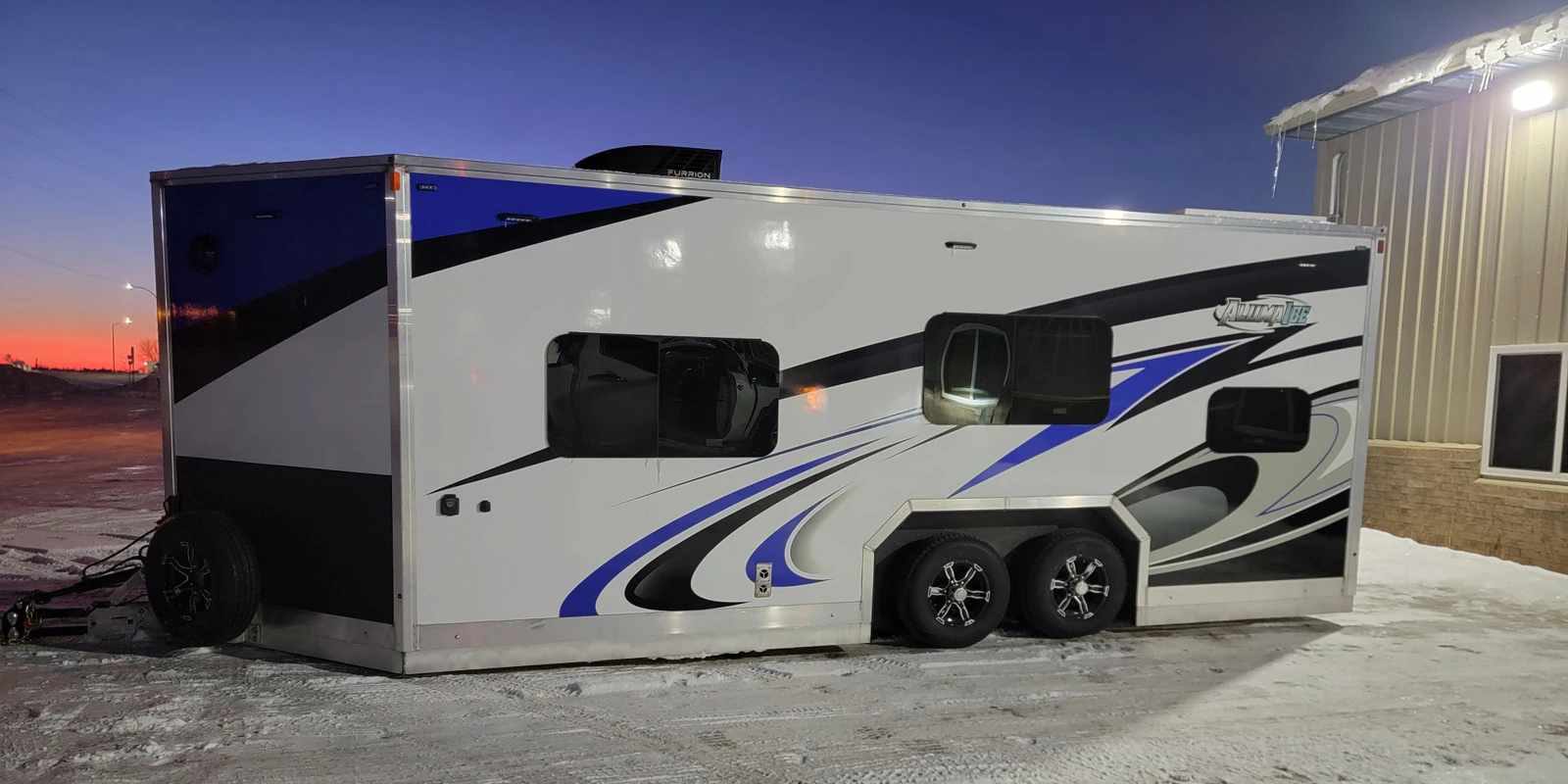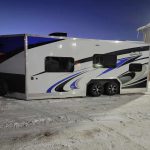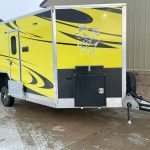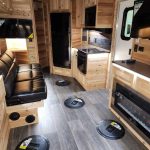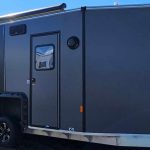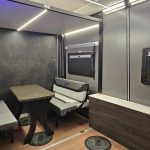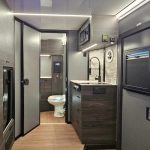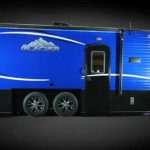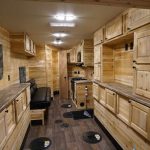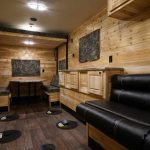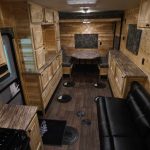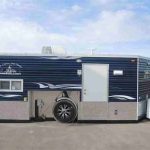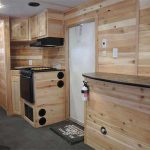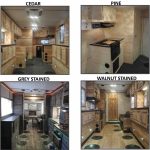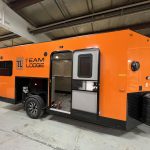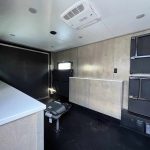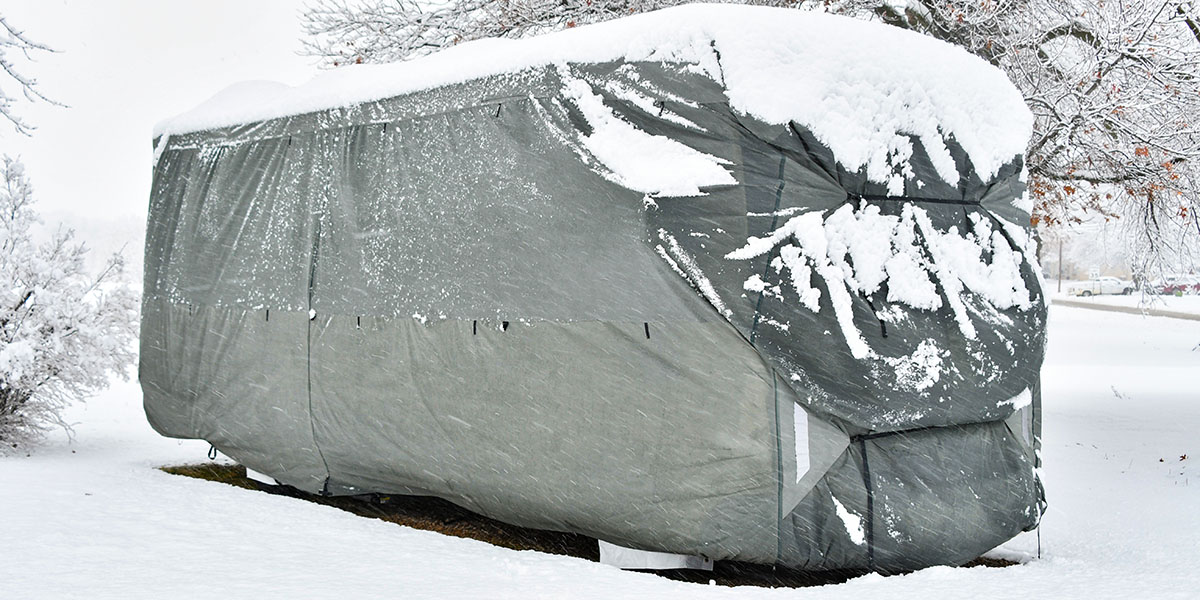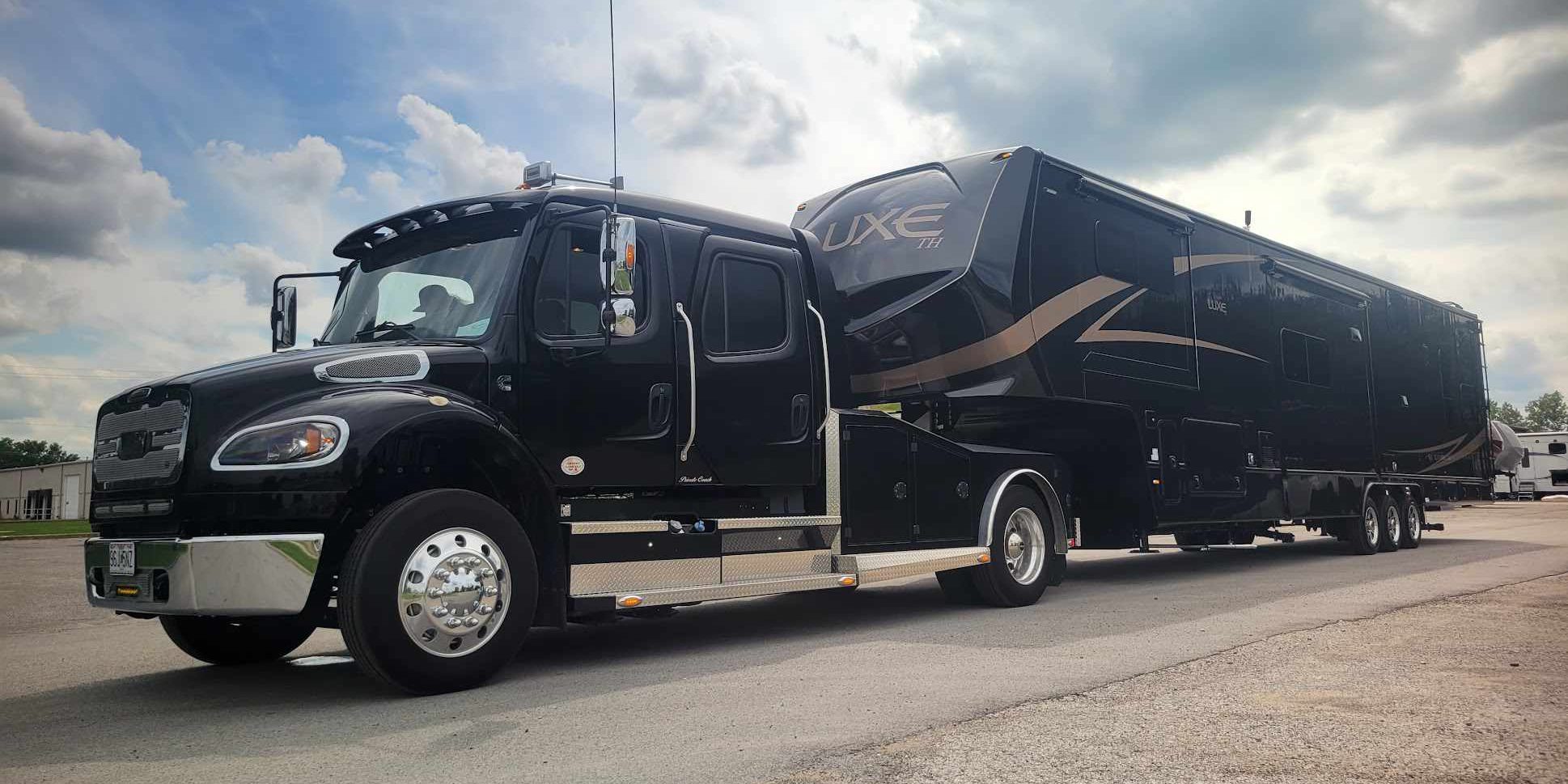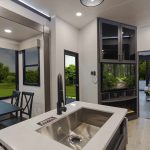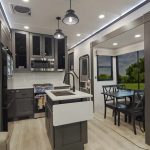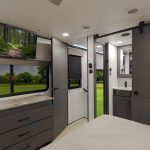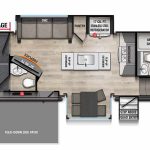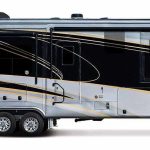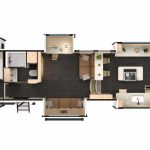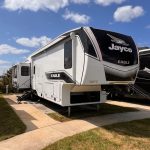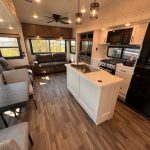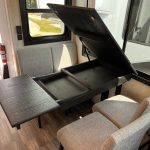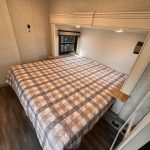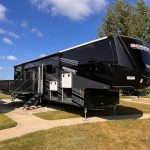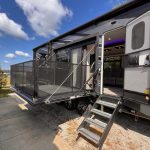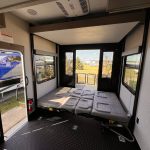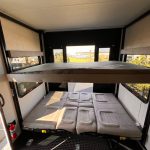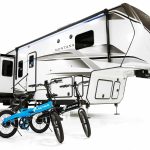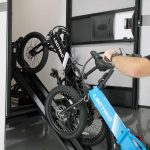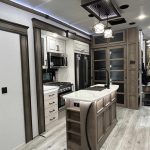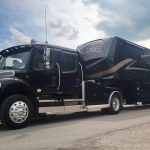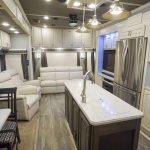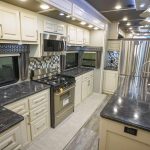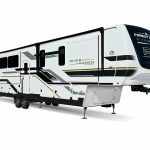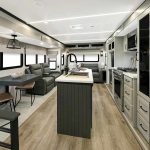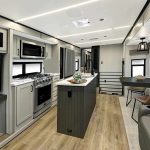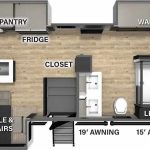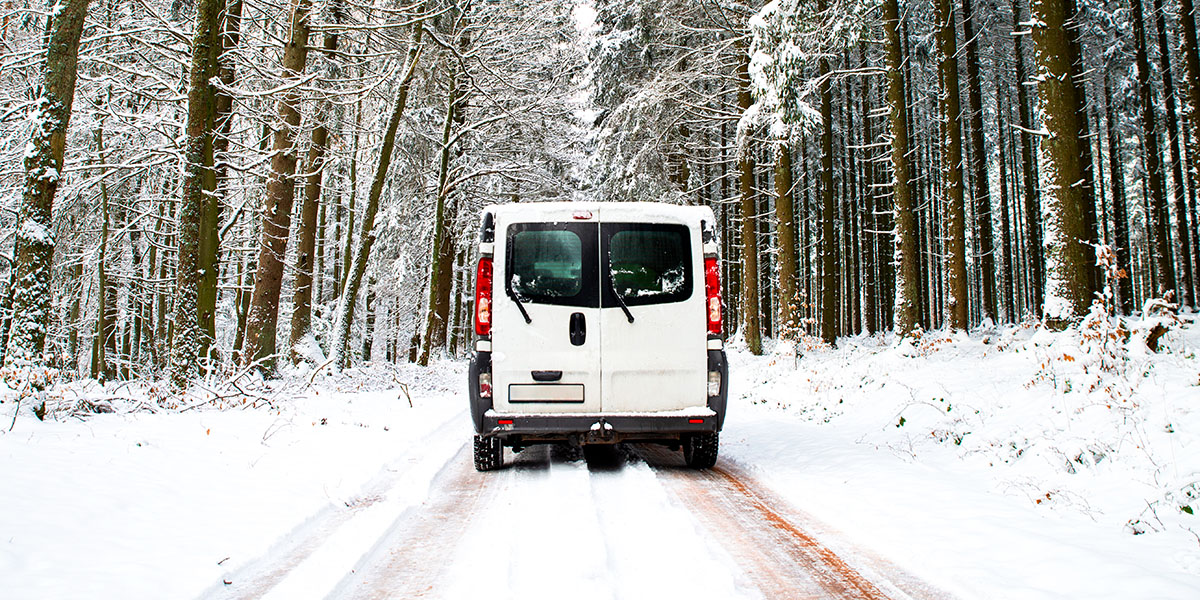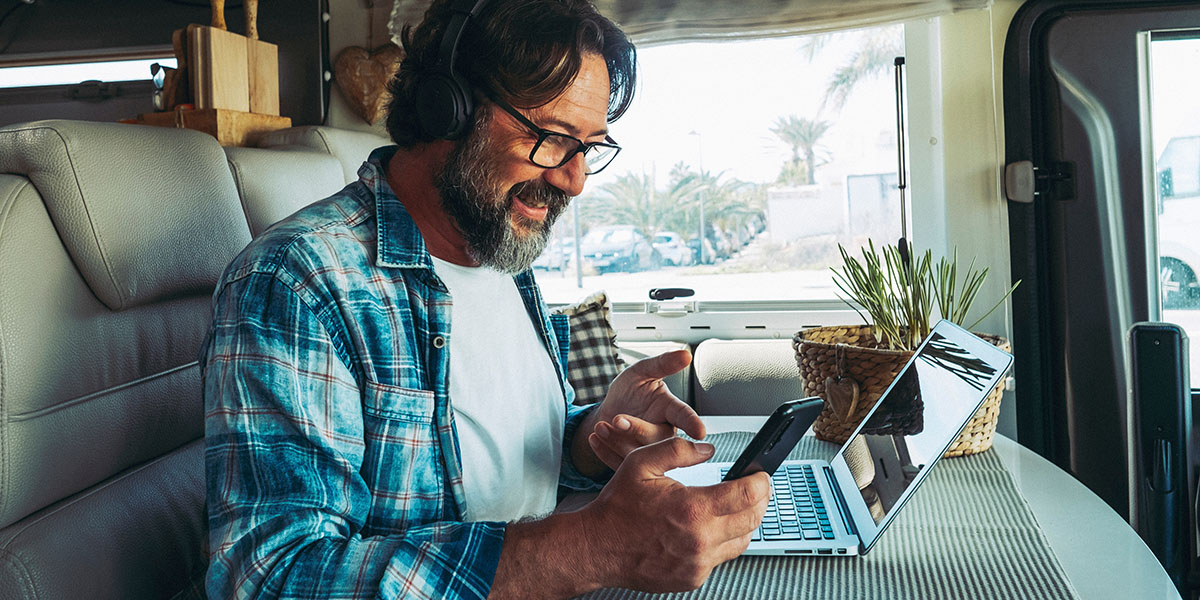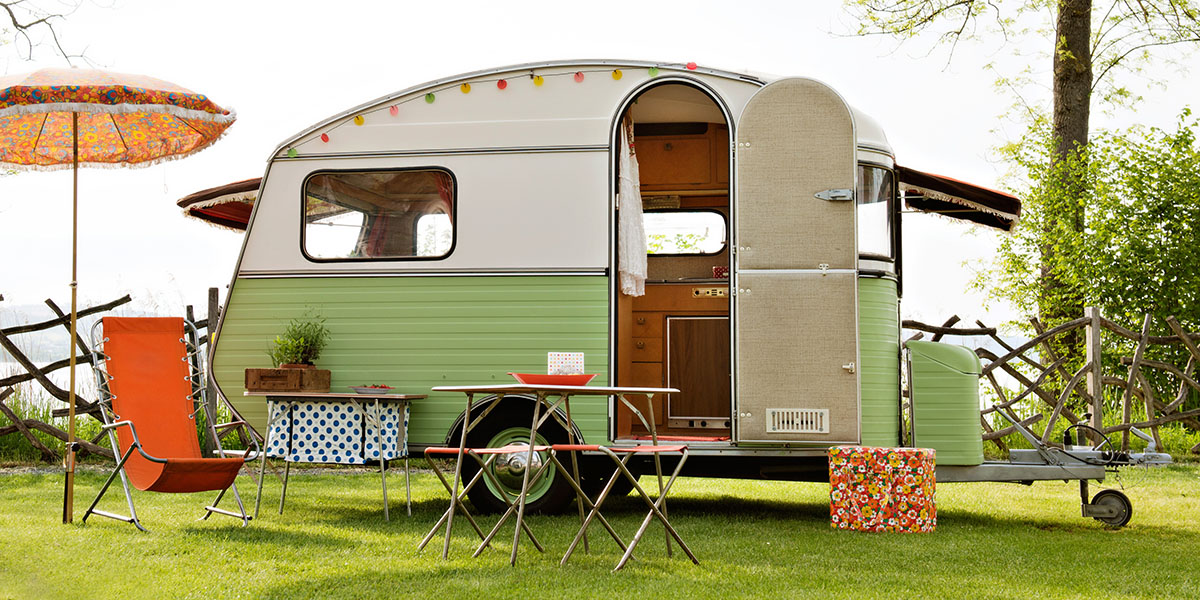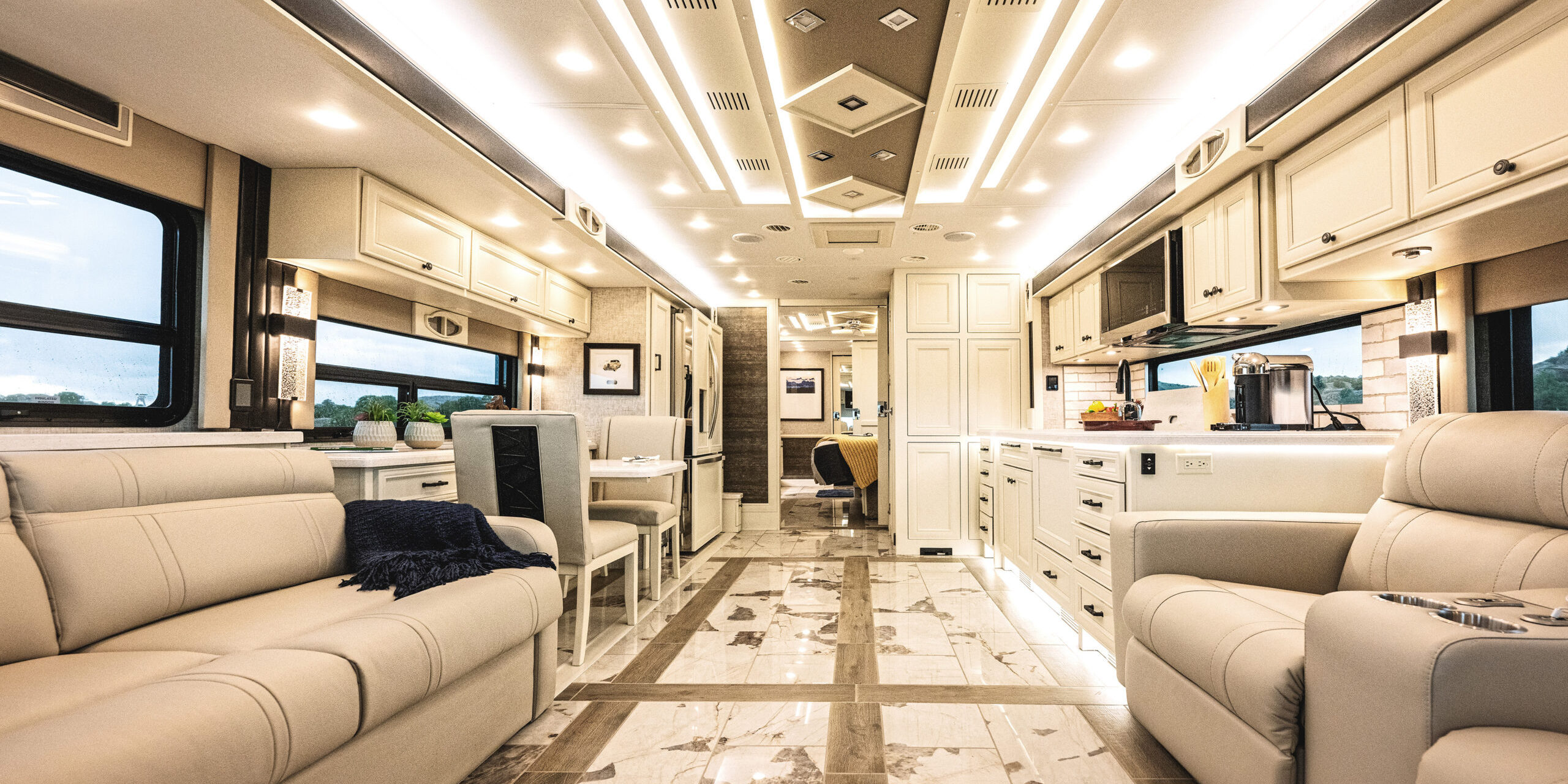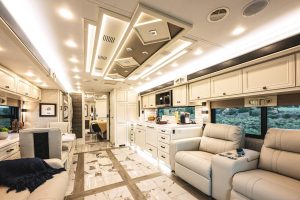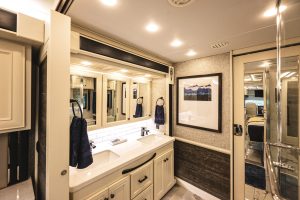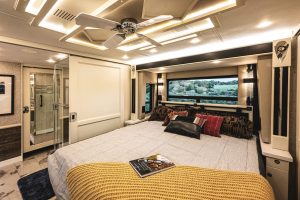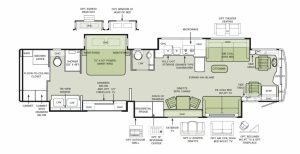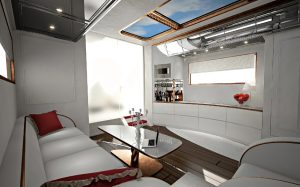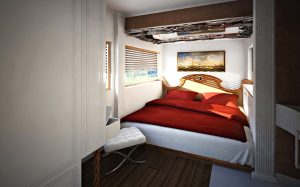Even among RVers, there are different breeds. And no season may reveal camper differences more keenly than winter. Some of us — snowbirds — just might head south for the winter. Others will start winterizing their RVs, preparing to store their RV for the winter. But there is another group, too. And they anxiously await this time of year so they can finally break their specialized RVs out. Who are they? People who own fish houses (aka ice houses). These hearty souls eagerly anticipate the freezing temperatures so they can get their RV out on the ice and take full advantage of their RV’s shelter as they ice fish. And if you want to join them (awesome), you’re question may be: What are the top fish house RVs?
Great question. But before we break the ice on some of the best fish house RVs in the industry, let’s pause for a moment and take a look first at what makes a fish house a fish house.
A Quick Tutorial on Fish House RVs
Fish house RVs — again, also known as “ice houses” — are towable RVs that are designed to very specifically take advantage of the colder weather. In fact, they’re not fully useful until the lakes in the region have frozen to the point where you can literally drive on them. This might seem inconceivable to those in the sections of the U.S. (You know, where freezing temperatures aren’t a regular thing.) But in the colder climates up north, even large lakes can freeze over so much that you can easily pull a trailer onto the lake.
These specially-equipped rigs are typically built in places where bodies of water can freeze to the extent that you an drive on them and are truly unique among RVs.
Equipped to Park on the Ice
For the most part, these rigs have a specialized suspension that allows you to literally lower the body of the RV right onto the ice, lifting the wheels and tongue in the process. These suspensions can be either manually or hydraulically-operated.
Once the house is down on the ice, there are holes in the floor of the trailer that have screw-on lids. Kind of like a bucket lid. From there, you unscrew the lids. Get out an auger. And drill a hole in the ice. This is where the fun begins. Now, you can sit in your heated fish house and enjoy fishing.
A History Lesson … Sort Of
That tradition started years and years ago. Back then, the Native Americans sought sustenance in the winter and were the first to catch fish under the frozen lakes by fashioning a hole in the ice. When the settlers came along, they built shanties and shacks. And once one of us saw what someone else did, the next person had to do something a bit fancier. You know, until we got to today’s custom-built, heated, and plumbed models with stylish interiors and even large-screen TVs.
What to Look for in a Fish House
As mentioned, these rigs have holes in the floor where you can drop your line in the water below after puncturing the ice in some fashion. Most of these models now have multiple holes. So most fish house RVs will have holes adjacent to seating areas. You can literally sit on a comfortable chair or seat and enjoy fishing with your friends. How many friends you can invite depends on the size of the trailer you have and how many seats and holes the unit has.
Pretty Cool Kitchens and Baths
Other than the unique suspensions and holes in the floor, these can be equipped much the same way that any other travel trailer is equipped. You can get them with a full suite of RV appliances. That includes refrigerators, stove tops, ranges, and microwaves. (All good for fish storage and prep). Many models even have full bathrooms (for potty breaks or cleaning off that fish smell).
Since some of these have bathrooms, know that the holding tanks have to be above the floor. (Freezing would be a significant disadvantage.) So, the size of these tanks is often relatively small compared to some RVs. To be honest though, a cartridge toilet would seem like the perfect thing in these trailers. Even so, many of the models I looked at that had bathrooms also had black tanks. Some also had full plumbing systems including sinks and showers but not all.
Some Fancy RV Tackle
I suppose the number of creature comforts one desires in fish house RVs depends on how you’re going to use it. But several of the companies I spoke with for this stated that the most lavish of their products were the ones buyers were seeking out.
Many of these also have multiple sleeping surfaces with bunks and folding couches being the primary type of seating/sleeping accommodation that I saw. In fact, some of these had electric fireplaces and TVs with some of the TVs even having an accommodation to keep an eye on cameras you put below the ice to observe what’s going on down there and know when the fish are present.
Types of Fish House RVs
As with most types of RV, you can go from mild to wild. There are companies who will custom build you almost anything you want and incorporate the features that matter to you. But these are the basic types of fish house RVs you’ll see.
Skid House
The very simplest type of fish house is a skid house. (And many of these are just made by their owners.) As the name implies, these are simply small buildings built on skids which you drag out to the ice. Since these don’t have any provision for a suspension and wheels, these are the most affordable and simplest.
Fish House
The fish house is what we’re primarily focusing on here, and these are essentially travel trailers with elaborate suspensions that can be raised and lowered so that the body of the trailer sits directly on the ice.
Toy Hauler
This is almost more of a subset of the fish gouse category in that it offers all the functionality of a fish house trailer while adding the ability to bring things like a side-by-side or motorcycle along.
How Fish House RVs Are Built
There are two main ways that these type of trailers are built — steel frame with wooden uppers and all-aluminum. Of course, as with any RV, there are variations on these main categories as well.
Something to be aware of is not just the base materials used but how these are built and the caliber of the materials being used. How an RV builder routes wiring and plumbing, the types of windows they use, and other details can make a difference in how long these RVs last. (And the type of experience you have while you’re using them.) Of course the degree and type of insulation is another thing that will absolutely matter as you’re sitting out on a frozen lake with your friends or family.
Price Can Be an Indicator About Build
Steel with wood tends to be more affordable as they’re just more common materials to work with. Many of the companies that build this way will create their own steel frames with accommodation for the unique lifting suspension system.
Once a steel structure has been built, the companies go on to build the upper sections of wood and then cover that with a corrugated aluminum skin. In traditional travel trailers. this type of build is referred to as “stick-and-tin” construction. There are also companies who will build the structure of their RVs in this manner but then use a fiberglass skin, which can be easier to maintain.
There are also a number of companies that weld their own aluminum structures. The advantage of aluminum is that it’s much more corrosion-resistant than steel. And it is also lighter. But the raw material is more expensive. Some of the construction techniques these companies use can also add to the cost.
A company that builds their own aluminum frame and then welds an aluminum cage together just is going to cost more than wood construction. You might also pay particular attention to how these companies insulate their rigs as aluminum is a lousy insulator. Typically they will accommodate this with the type and volume of insulation they utilize.
The positive side of this is that, with an aluminum frame and aluminum structure, these are very solid and the opportunities for moisture to cause damage are minimized. These are also typically lighter rigs as well for a given size.
Leaning into Those Cabin Vibes
Something to take note of: Most of these trailers don’t have slide rooms. So, while they can be used as normal travel trailers once the water and weather thaw out, they tend to be a bit more space-constrained than some travel trailers. However, as with any rule, there are exceptions to this one as well.
Something I really like is that so many of these use a knotty pine wood on the interiors that is reminiscent of a cabin in the woods. There are some people, including me, who really love this appearance.
Another interesting thing. These are basically unique RVs but can actually be used all year-round. Since they have the unique ability to drop down onto the ground, they don’t have stabilizer jacks, and when dropped to the ground, they are incredibly stable.
One builder noted that accommodating uneven surfaces when used for normal camping is as simple as placing a piece of wood under one corner when lowering the RV so that it sits level.
Landing a Top Fish House RV
Alright, educated enough? Hope so, because we’re about to dive into some really cool fish house RVs. What I’ve tried to do here is choose models that are as close to one another as possible in size. Figuring you might want to also use this during the warmer months, I chose something that’s about the size of a smaller travel trailer, so you can see the differences in features and weights.
AlumaIce
AlumaIce from Mankato, Minnesota is a company that invites buyers to work with them to detail the trailer that they want. The company offers floorplans and models that reflect what the others in this article have, but there are also variations that can be quite striking. For example, the company’s website shows some very elaborately styled exteriors.
The company has some models with a slide room. As mentioned before, that’s very unusual for a fish house. Another thing I noticed: While many of these fish house models have fairly low-grade appliances that’s not the case with AlumaIce at all.
Length: 24 feet 9 inches • Width: 8 feet • Plumbing • Sleeps 5 • Insulation: spray foam on roof, walls and floor • Build: Aluminum frame with composite exterior panels
Core-Ice Fish House
The Core-Ice product is built differently than most of the others in this article. They’re a welded aluminum construction but the walls, ceiling, and floor are all composite panels. The company claims that you can literally hose these trailers out without worrying about damage to the rig. The company also uses premium Truma components for the A/C and furnace. The compartment that the holding tanks are in is also heated. Like the rest, this compartment is above the frame. The company also notes that even in sub-zero conditions the water system should be fully functional.
Core-Ice fish houses also offer a good number of customizations including offering unique styling of some of the interior panels. That includes some advanced lithium and solar packages. These trailers really feel much more like very modern travel trailers instead of offering the more cabin-style knotty wood interiors.
There is also something the company calls Core Rail which allows you to fit in and move a variety of items including cabinetry and more.
Core-Ice 8019RV
Length: 19 feet 6 inches • Width: 8 feet • Plumbing • Sleeps 4 • Insulation: composite wall builds with integrated insulation • Build: Aluminum frame
Forest River Cherokee
The largest-selling brand of travel trailers in the US are under Forest River’s Cherokee brand with sub-brands like Grey Wolf, Sabre, and Arctic Wolf all range from very affordable “stick-and-tin” trailers to destination trailers you could call home.
As you might imagine, the Ice Cave line from Cherokee are their fish house range and come in a number of floorplans.
Forest River Cherokee Grey Wolf 16GR
Length: 26 feet 6 inches • Width: 8 feet • Plumbing • Sleeps 5 • Insulation: batten insulation with moisture barrier • Build: Steel frame, wood upper framing with corrugated aluminum skin
Glacier Ice House
Glacier Ice House is one of the companies that starts with a steel frame and then builds walls with wood framing and an aluminum skin. Insulation in these is a batten-style insulation with a barrier to keep the outside temps outside. Among the Glacier Ice House line highlights, these models are available in multiple colors, can host six fishing holes, and have a hydraulic lift.
Glacier 18RD
Length: 24 feet 9 inches • Width: 8 feet • No plumbing • Sleeps 5 • Insulation: batten insulation with moisture barrier • Build: Steel frame, wood upper framing with corrugated aluminum skin
Ice Castle
The Ice Castle Fish House in Montevideo, Minnesota offers a variety of models of traditionally-built trailer with steel frames and wooden structure wrapped in corrugated aluminum. The company has been building this style of trailer since 1997. (Their promotional material lays claim to their being the first on the market.) The company started by building sheds and have since become known for their trailers.
One of the interesting things is that Ice Castle can put slide rooms on their models. That includes slide rooms at the back and on the sides. The company says that customization is a hallmark of theirs.
Ice Castle 8’ X 16’ Mille Lacs
Length: 24 feet 9 inches • Width: 8 feet • No plumbing • Sleeps 5 • Insulation: Batten insulation with moisture barrier • Build: Steel frame, wood upper framing with corrugated aluminum skin
Team Lodge
Located in Watertown, South Dakota, Team Lodge makes everything from very small single-axle toy haulers to larger units and some luxury models as well. There are also models designed to be very light, and those that are are more fully equipped.
Team Lodge builds their trailers on tubular steel with walls and ceilings being framed in wood. The exterior walls are aluminum sheeting with the roof being a flexible membrane-type roof.
Even the company’s smallest trailers are designed to be able to accommodate toys. (With the size of the toys being relevant to the size of the trailer, of course.) Like many of these trailers, Team Lodge offers a lot of options and flexibility in the build. Things like awnings, solar, roof racks, and so many other options are offered by the company.
What Makes Team Lodge Unique
One of the unique things the company offers is ceiling-mounted tote storage utilizing standard totes. This is a unique way to be able to bring things along. I could see having totes in your own garage that are relevant to the way you want to use this trailer. For example, there could be one full of fishing gear. One with hunting gear. One with winter clothing. That sort of thing. You would swap these out based on the adventure you’re going on.
The company also has a unique bunk/couch design in many of their RVs which converts from a bunk bed to a couch with the platforms that form the surfaces also being able to be folded-up against the sidewall of the trailer.
To their credit, I think Team Lodge has possibly the best website of the fish house RV builders that I came across with videos and details about each of their models. The company claims to be built by and for lovers of the outdoors – the design of these seems to reinforce that.
Team Lodge Extreme Lite
Length: 24 feet 9 inches • Width: 8 feet • Plumbing • Sleeps 2-6 (depending on configuration) • Insulation: Spray foam • Build: Steel frame, wood upper framing with aluminum skin

